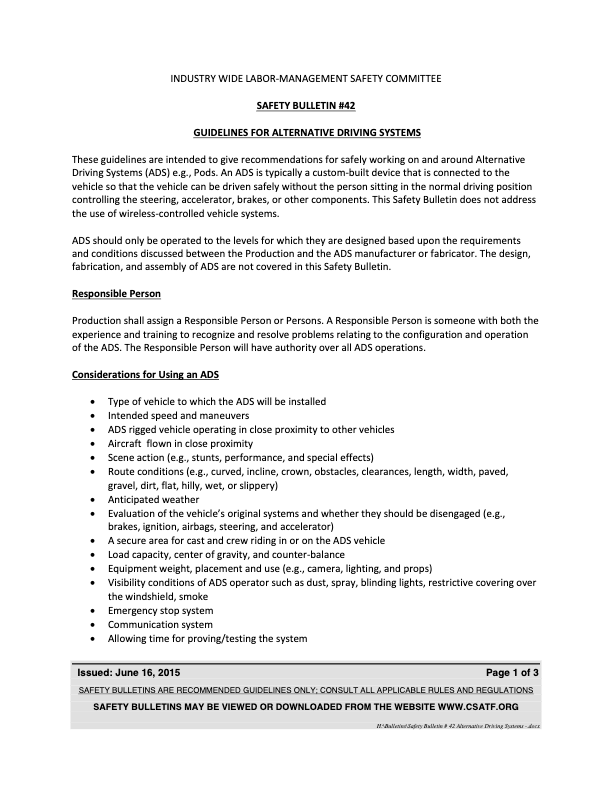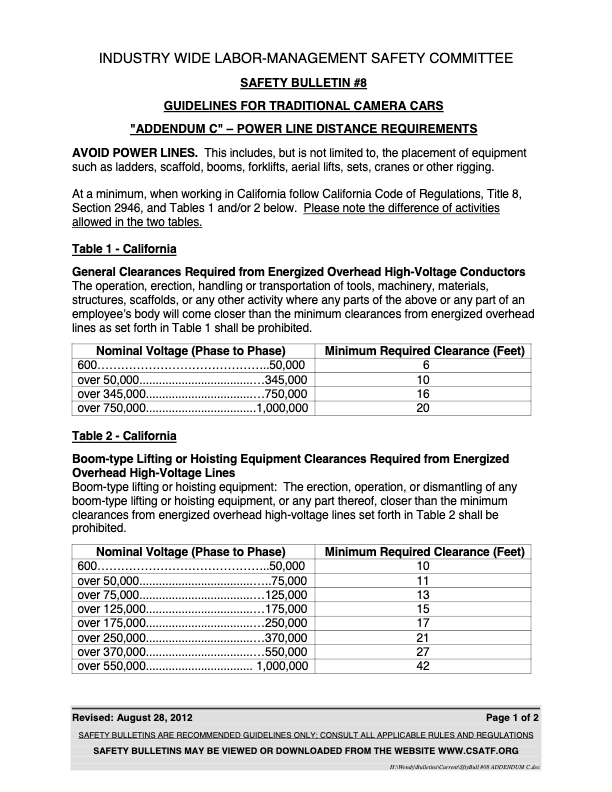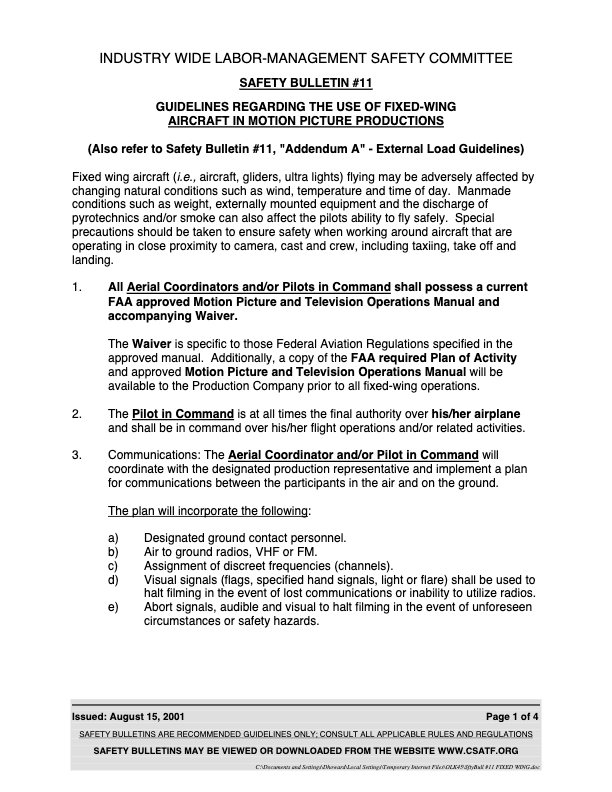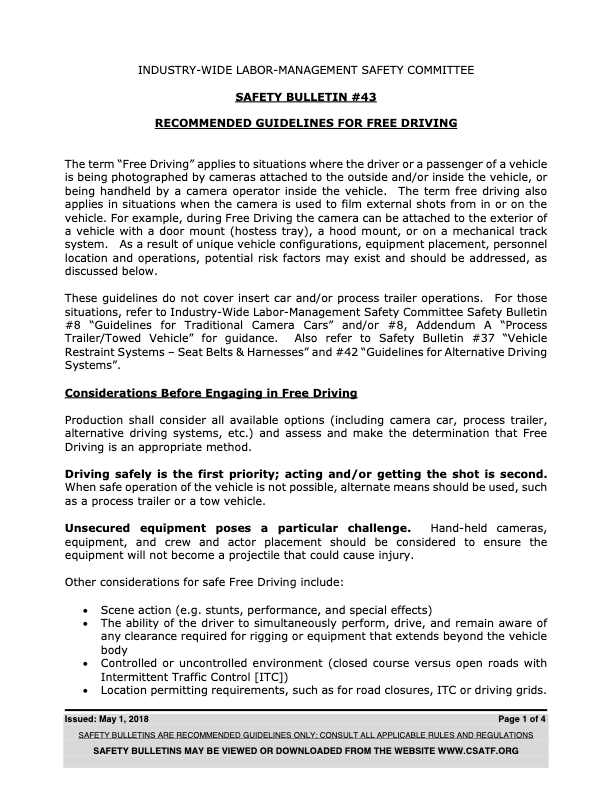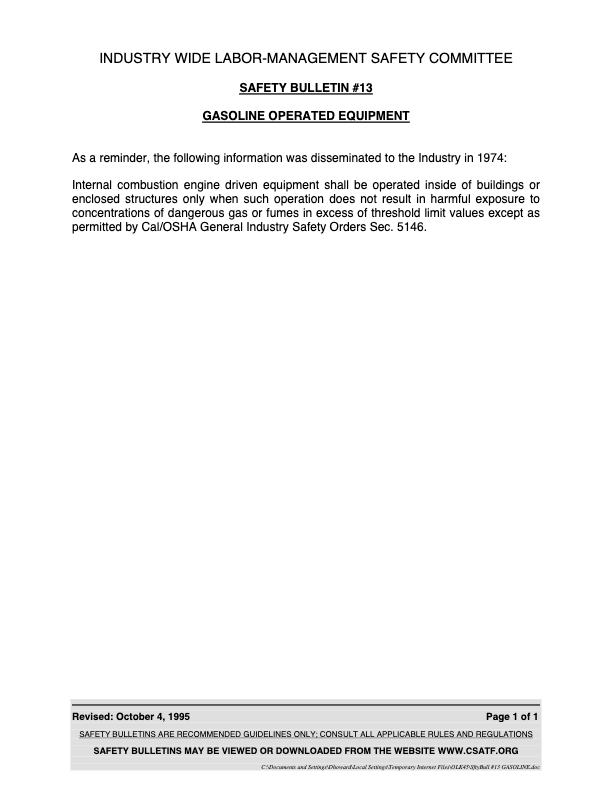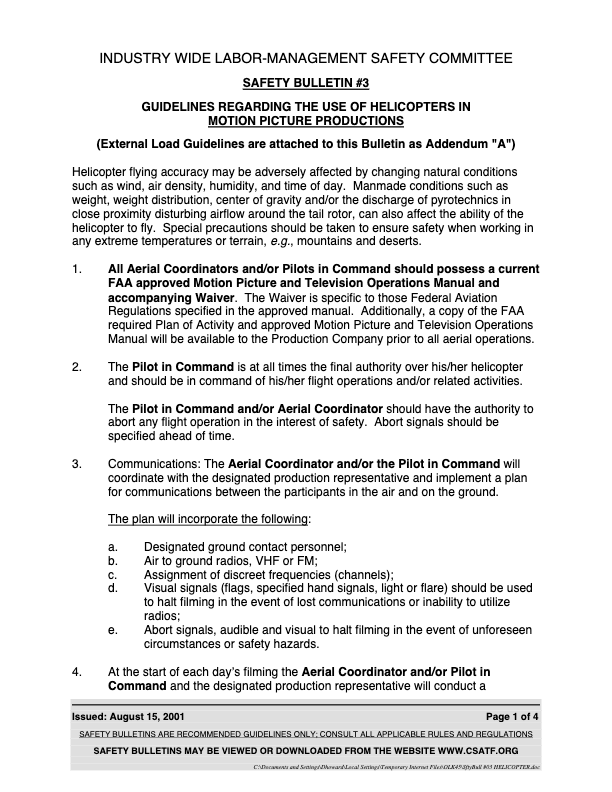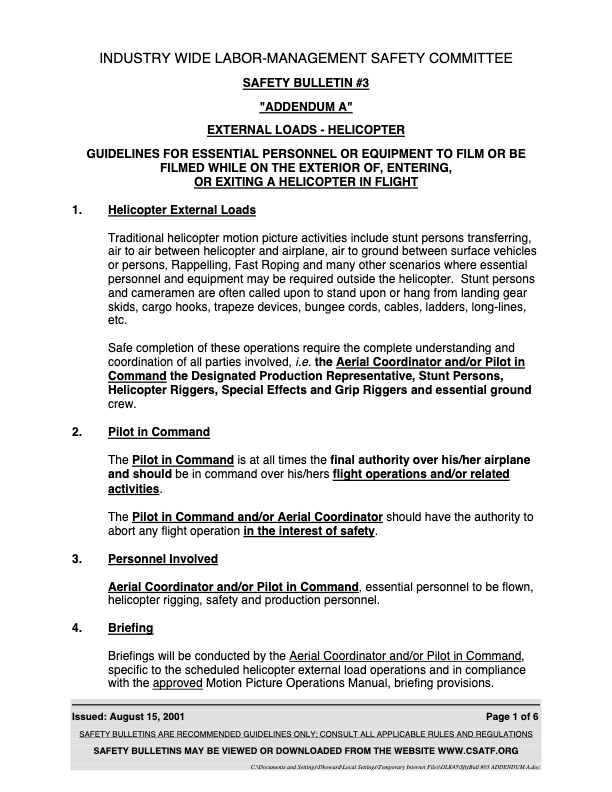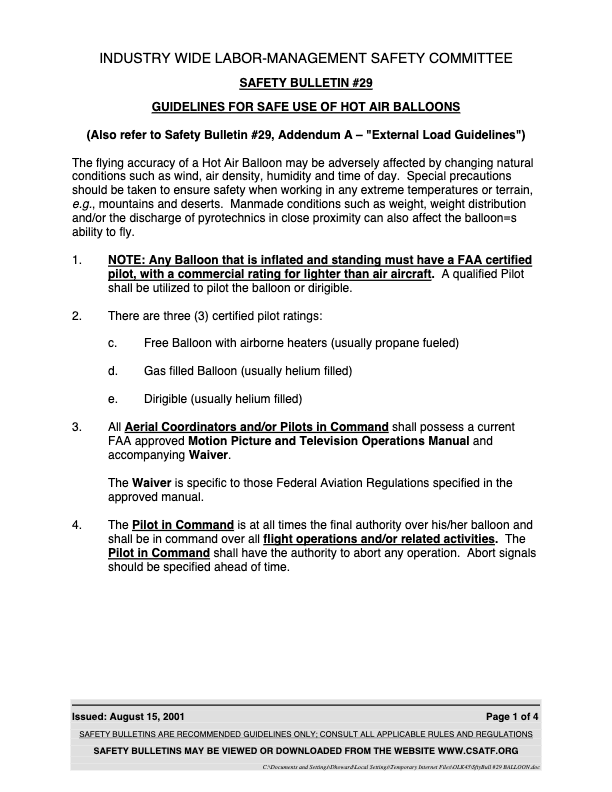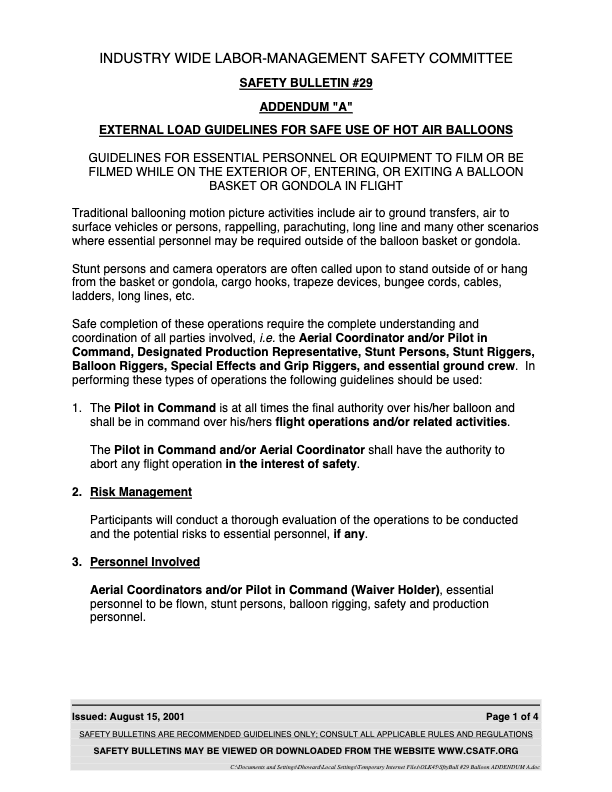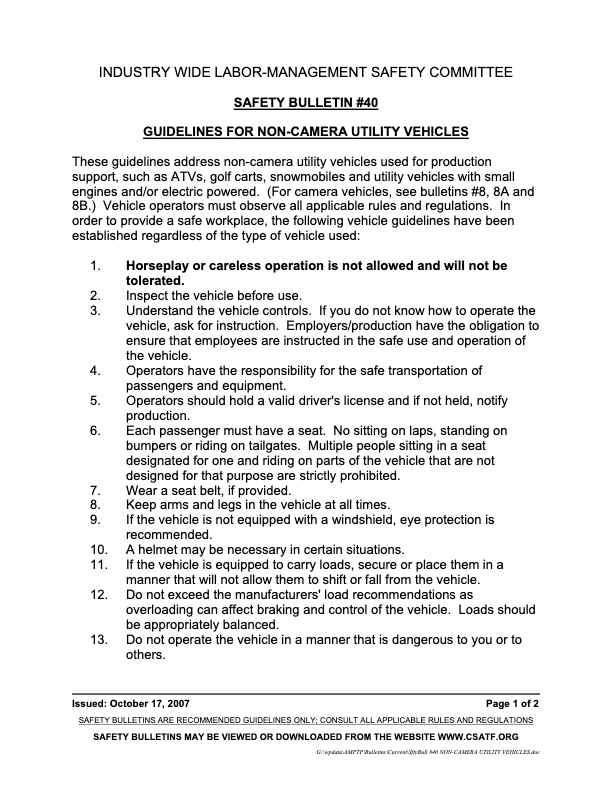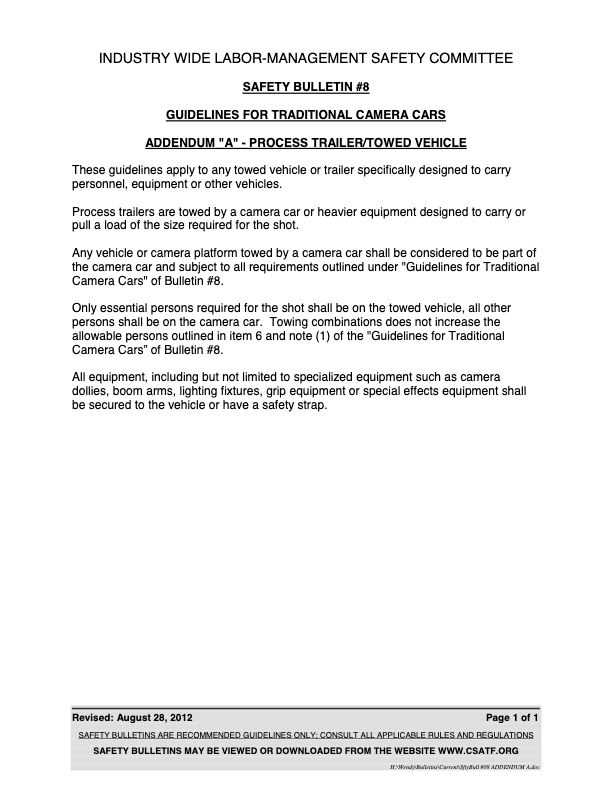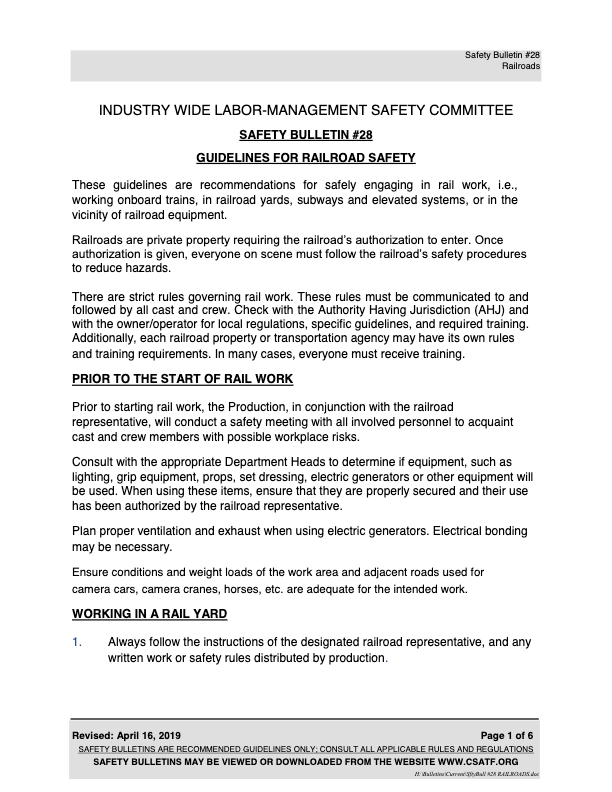Safety Bulletin
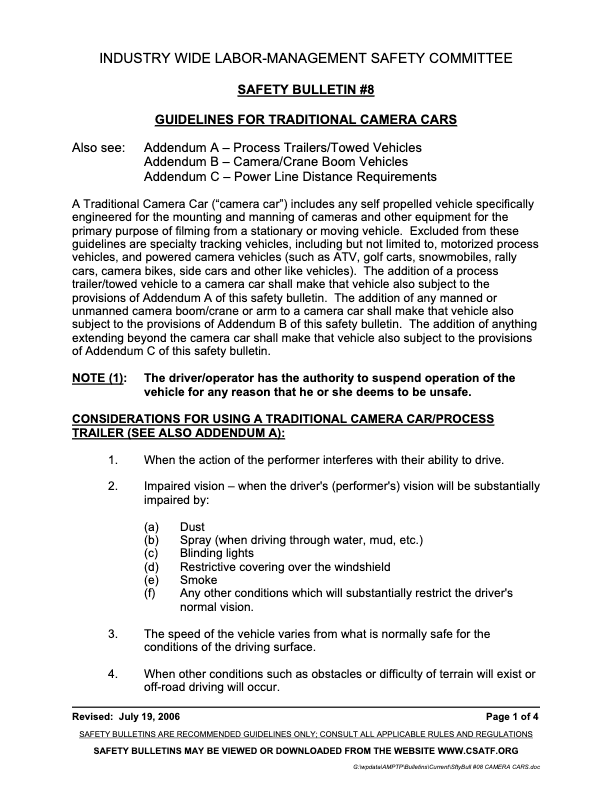
Guidelines
A Traditional Camera Car (“camera car”) includes any self propelled vehicle specifically engineered for the mounting and manning of cameras and other equipment for the primary purpose of filming from a stationary or moving vehicle. Excluded from these guidelines are specialty tracking vehicles, including but not limited to, motorized process vehicles, and powered camera vehicles (such as ATV, golf carts, snowmobiles, rally cars, camera bikes, side cars and other like vehicles). The addition of a process trailer/towed vehicle to a camera car shall make that vehicle also subject to the provisions of Safety Bulletin: Process Trailers and Towed Vehicles. The addition of any manned or unmanned camera boom/crane or arm to a camera car shall make that vehicle also subject to the provisions of Safety Bulletin: Camera Boom Vehicles. The addition of anything extending beyond the camera car shall make that vehicle also subject to the provisions of Safety Bulletin: Camera Car – Power Line Distance Requirements.
Note: The driver/operator has the authority to suspend operation of the vehicle for any reason that he or she deems to be unsafe.
Considerations for Using a Traditional Camera Car/Process Trailer
- When the action of the performer interferes with their ability to drive.
- When the driver’s vision will be substantially impaired by:
- Dust
- Spray (when driving through water, mud, etc.)
- Blinding lights
- Restrictive covering over the windshield
- Smoke
- Any other conditions which will substantially restrict the driver’s normal vision.
- When the speed of the vehicle varies from what is normally safe for the conditions of the driving surface.
- When other conditions such as obstacles or difficulty of terrain will exist or off-road driving will occur.
- When any aircraft, fixed-wing or helicopter is flown in close proximity to the vehicle creating a hazardous driving condition for the performer(s).
- Whenever speed or close proximity of two or more vehicles create conditions dangerous to the drivers, performers, passengers, film crew, or vehicles.
The foregoing shall not apply to an on-camera driver qualified as a stunt performer under the Screen Actors Guild Codified Basic Agreement or when a performer has the special expertise to perform the sequence in a safe manner. (See Safety Bulletin: Stunts)
Guidelines Prior to Operation
- A copy of this bulletin should be kept with the camera car at all times.
- A camera car must be inspected before and after use, or at a minimum, on a daily basis. Inspection items include, but are not limited to: brakes, tires, steering, engine, drive train, vehicle’s electrical system, towing equipment, and all safety equipment. Any items not fully functioning must be repaired by a qualified person before use.
- All rigging of equipment, including any changes, is to be performed by qualified personnel in an area secured for the purpose of rigging, which is free of known hazards, including other vehicular traffic. The rigging must be discussed with the camera car driver prior to the use of the vehicle. The driver must inspect the vehicle after any rigging changes are made to ensure that they will not adversely affect the safe operation of the vehicle.
- All personnel riding on the camera car must be provided a safe and secure place to ride to avoid the possibility of a fall hazard. Such safety precautions include, but are not limited to: railings, harnesses, helmets, etc. This may be accomplished either by a safety railing placed at the appropriate height for the layout of the camera car or by a properly secured safety harness.
- Malfunctioning or broken equipment must be reported immediately, taken out of service, and replaced or repaired prior to use.
- No more passengers shall be transported than the number whose weight, in addition to the weight of any property transported, can be carried without exceeding the manufacturer’s maximum gross vehicle weight rating or the combined maximum rating of the tires supporting each axle. Only those persons absolutely required to perform work during the rehearsals and the actual shot sequences shall be allowed on the camera car as determined by the driver/operator in consultation with the 1st A.D. and the Key Grip (if on set or location). The total weight shall never exceed the manufacturer’s Gross Vehicle Weight Rating (G.V.W.R.). Generally, the maximum number of personnel allowed on camera cars should not exceed nine (9), including the driver. However, as vehicles may differ, the manufacturer’s guidelines must be followed at all times and in all cases. To determine the number of on board personnel, the following factors must be considered:
- Weather at the time of the intended shot
- Surface to be used: concrete, asphalt, decomposed granite, compacted dirt, etc.
- Surface condition: wet, oily, broken, icy, loose debris, washboard, etc.
- Route configuration: straight, slightly curved, moderately curved, “S” curved; level or inclined, crown, etc.
- Topography: flat, hilly, urban, countryside, mountainous, etc.
- Speed of the vehicle
- Visibility: trees, fog, smoke, lighting, structures, rigging, overhead obstruction, etc.
- All overhead and side obstructions: power lines, tree limbs, overpasses, traffic signals, etc.
- Shot sequence: following lone vehicle, stunt action with cross- overs/head-on or near misses, high speed chase, proximity of other vehicles, background performers and/or property, etc.
- Equipment rigging: multiple cameras, camera lights, etc.
- Escape routes and contingency plans
Note: The performance, operation and capacity of the camera car will vary when all factors are taken into consideration. The camera car driver has the authority to make the final determination regarding the operation of the camera car.
Guidelines When Operating the Camera Car
- All items placed on the camera car are to be properly secured. Extra equipment, which is not used for the shot in progress, should be placed in a follow vehicle.
- A shot-specific safety meeting should be held involving all personnel riding on the camera car or in close proximity (e.g., stunt personnel or background performers, etc.). This meeting should include a “walk-through” or “dry-run.” An understanding of the intended action, possible changes due to hazards, and authority to abort, including signals to be used, should be made clear. If for any reason there is a change in the choreography of the camera car, other picture vehicle(s) in the shot, or personnel involved in the shot, a safety meeting must be held with all personnel involved to ensure everyone understands the changes and is in agreement with those changes.
- The driver of the camera car must alert personnel of the car’s impending movement by making two (2) short “taps” of the car’s horn or by using an on-board P.A. system.
- Personnel are not allowed to walk between the camera car and any vehicle that it is towing while the camera car’s engine is running.
- No personnel are allowed on the tow bar while the camera car is in motion.
- Personnel are not allowed to get on or off the camera car while it is in motion. If the engine of the camera car is running and the vehicle is stopped, personnel should not enter or exit the vehicle unless instructed to do so by the driver or 1st AD.
- Personnel riding on the camera car should protect themselves from changes in speed or direction by:
- Remaining seated at all times while the car is moving
- Placing both feet on the floor, or on a foot rest
- Firmly gripping the grab rail (safety railing)
- Riding only in a protected, safe and secure area on the camera car
- Staying alert, expecting the unexpected.

